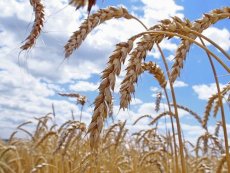New publications
Scientists know how to reduce toxins in plant-based foods
Last reviewed: 01.07.2025

All iLive content is medically reviewed or fact checked to ensure as much factual accuracy as possible.
We have strict sourcing guidelines and only link to reputable media sites, academic research institutions and, whenever possible, medically peer reviewed studies. Note that the numbers in parentheses ([1], [2], etc.) are clickable links to these studies.
If you feel that any of our content is inaccurate, out-of-date, or otherwise questionable, please select it and press Ctrl + Enter.

Every year, more and more information appears about environmental pollution, which leads to a deterioration in the health of the population.
First of all, this concerns toxins that pose a danger to human health. This article will focus on cadmium (Cd).
This substance usually enters the body through plant products such as grains and vegetables.
A new study by scientists published in the journal Trends in Plant Science suggests ways to help reduce the amount of cadmium in the food we eat every day.
“Cadmium is one of the most toxic heavy metals, it belongs to the second hazard class of ‘highly hazardous substances’. This toxin settles in the soil and the more industrialized the country, the higher its concentration. The substance accumulates most in the kidneys and liver,” says Dr. Stefan Clemens, head of the Department of Plant Physiology at the University of Bayreuth, Germany. “High doses of cadmium can lead to kidney dysfunction, osteoporosis, cancer and cardiovascular diseases. There are no absolutely safe doses of this toxin, so we must try to reduce its consumption to a minimum. The most common ways for cadmium to enter the body are through plant products, which ‘pull’ the toxin from the soil. We need to know more about the content of this element in various types of food. Fortunately, scientists around the world are successfully working in this direction.”
According to experts, they have previously managed to understand why one rice plant can accumulate more cadmium than another. This data can be used to select improved plants and cultivate new varieties that will retain their beneficial properties but will not accumulate harmful substances. In addition to rice, scientists are also focusing on other agricultural crops, such as wheat and potatoes.
The authors note that their knowledge is not widely used, but such a possibility exists. In addition, the specialists have discovered genes that can be used as biomarkers for choosing a specific variety for breeding.
“Of course, the best thing would be to simply get rid of this toxic substance forever, but to achieve this result, we need to spend a lot of time, so for now we need alternative solutions to this problem,” concluded Dr. Clemens.

 [
[